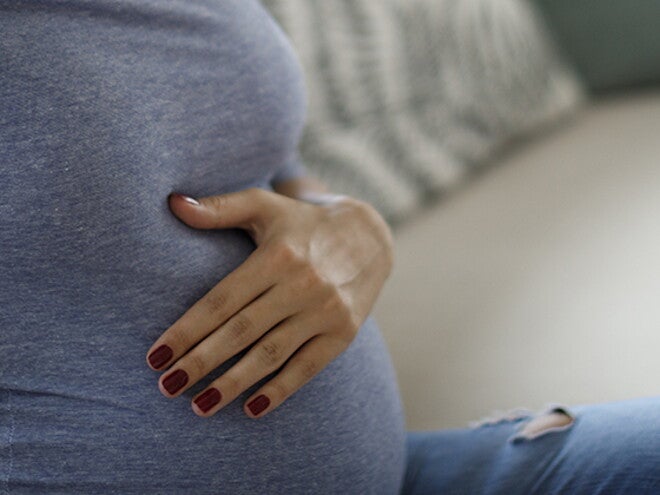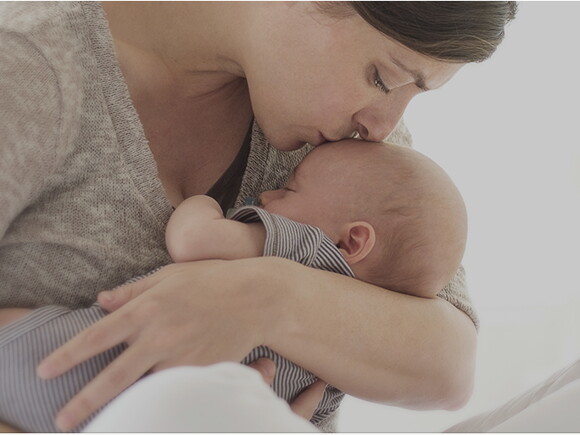
Am I ready to give birth? Signs of labor checklist
Learn to identify the first signs of labor and understand the stages of childbirth. Get practical recommendations for a smoother labor experience.
As the final weeks of pregnancy approach, the anticipation of meeting your baby grows stronger each day. Amidst this excitement, it’s natural to wonder, "Am I ready to give birth?" Understanding the signs of labor can provide clarity and peace of mind during this transformative period.
Preparing for labor involves recognizing your body’s cues that indicate it’s almost time for your baby to arrive. This knowledge empowers you to make informed decisions and helps reduce anxiety as you approach delivery.
Labor is a complex process, and each woman's experience can be different. However, there are common signs of labor that most expectant mothers can watch for. Being aware of these signs ensures that you are ready to respond appropriately when labor begins.
In Baby&Me, we’ll look to those signs of labor. Whether you are a first-time mother or have experienced childbirth before, this information can be incredibly helpful.
First Signs of Labor
Recognizing the first signs of labor can help you determine when it's time to head to the hospital or contact your healthcare provider. While every woman's experience is unique, there are common early indicators that labor is beginning. Being aware of these signs allows you to prepare mentally and physically for the upcoming birth of your baby.
- True labor contractions come at regular intervals and gradually get closer together. They also tend to increase in strength over time.
- The rupture of the amniotic sac, commonly known as your water breaking, can happen as a gush of fluid or a slow trickle. This signals that labor is likely imminent or already starting.
- You may notice a pink, brown, or bloody discharge, known as the "bloody show." This is a sign that your cervix is beginning to dilate and thin out in preparation for labor.
- Persistent, dull lower back pain, especially if it radiates to the abdomen, can be an early indication of labor. This pain might come and go or be continuous.
- As your baby moves lower into the pelvis, you might feel increased pressure in that area, accompanied by a sensation of heaviness.
- An unexpected burst of energy and a strong desire to organize or prepare your home for the baby, known as the nesting instinct, can precede labor.
Being aware of these early signs can help you differentiate between false alarms and true labor, allowing you to respond appropriately and contact your healthcare provider when necessary.
What Happens During Labor?
Labor is a remarkable process that marks the beginning of childbirth. It involves a series of stages that your body goes through to deliver your baby. Knowing what happens during labor can help you feel more prepared and in control as you approach this significant event.
Stage 1: Early and Active Labor
The first stage of labor begins with early labor, where you may experience mild, irregular contractions. During this time, your cervix starts to thin out (efface) and open (dilate). This stage can last several hours or even days, especially for first-time mothers.
As labor progresses into active labor, contractions become more regular, intense, and closer together. The cervix continues to dilate more rapidly, usually up to about 10 centimeters, which is necessary for your baby to pass through the birth canal.
Stage 2: Delivery of the Baby
The second stage of labor begins once the cervix is fully dilated. At this point, you will start to push with each contraction to help move your baby down the birth canal. This stage can last anywhere from a few minutes to several hours.
It's an intense period of effort, but it's also incredibly rewarding as you finally get to meet your baby. Your healthcare team will guide and support you through the pushing process, ensuring both you and your baby are safe.
Stage 3: Delivery of the Placenta
After your baby is born, the third stage of labor involves delivering the placenta. This is typically much quicker than the previous stages, often taking about 5 to 30 minutes. Mild contractions will help detach the placenta from the uterine wall, and your healthcare provider may assist by gently pulling on the umbilical cord to help expel it.
Once the placenta is delivered, your uterus will continue to contract to help stop bleeding and begin the recovery process.
Understanding the stages of labor helps you know what to expect, making the journey to motherhood a little smoother and less daunting.
Recommendations During Labor
Navigating the labor process can be challenging, but there are several strategies and recommendations that can help you manage pain, stay comfortable, and ensure a smoother experience. Here are some key recommendations to consider during labor:
- Drinking water and eating light, energy-boosting snacks can help maintain your strength and stamina during labor.
- Techniques such as deep breathing, visualization, and meditation can help manage pain and reduce anxiety. Practicing these methods beforehand can make them more effective during labor.
- Moving around and changing positions can help progress labor and provide relief from discomfort. Walking, swaying, using a birthing ball, or adopting positions like squatting or kneeling can all be beneficial.
- Discuss pain relief options with your healthcare provider beforehand. This may include epidurals, spinal blocks, or natural methods such as warm baths, massages, and acupressure.
- Keep open lines of communication with your doctors, nurses, and midwives. Inform them about your pain levels, concerns, and any changes you feel.
- Whether it’s your partner or a family member, having someone by your side to provide emotional support, encouragement, and advocacy can make a significant difference.
By following these recommendations, you can create a more comfortable and controlled labor experience, helping you and your baby stay safe and healthy as you approach delivery.

Gain a better understanding of your child's development with the help of our stages
































